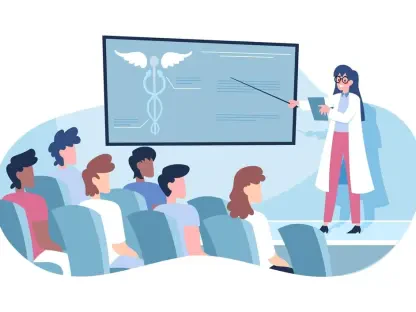The administration of health services holds a pivotal role in shaping the quality and efficiency of emergency medical services (EMS) in Yanbu, Saudi Arabia. Notably, the relationship between health services administration (HSA) and EMS influences the overall performance and care outcomes significantly. The goal is to explore how effective health service management fosters improved EMS delivery, impacting patient outcomes and service efficiency through well-structured policies and comprehensive administrative support. An efficient administrative framework, tailored to the unique needs of EMS, becomes a cornerstone in promoting high standards of medical care, especially during emergencies.
The Role of Health Services Administration in EMS
Health services administration serves as the backbone of any medical organization due to its far-reaching effects on various health services, including emergency medical services. In Yanbu’s healthcare sector, HSA’s role is especially crucial, given the pressing need to enhance patient care and outcomes through robust administrative protocols. EMS performance is significantly influenced by the HSA’s development and implementation of appropriate protocols and policies. These administrative measures ensure that EMS providers operate within a framework that supports efficiency and effectiveness.
The level of administrative support provided to EMS providers is evident in the comprehensive training programs, clearly defined rules, and procedural frameworks set by HSA. These elements collectively contribute to the orderly execution of emergency services. For instance, the availability of well-designed training programs ensures that EMS personnel are well-prepared to tackle emergencies efficiently. Additionally, procedural frameworks laid out by HSA help in maintaining consistency and standardization across services, further enhancing the reliability of EMS operations in Yanbu.
Quality of Medical Care in Emergency Situations
The quality of medical care, particularly during emergencies, is closely linked to the administrative structures that underpin EMS providers. Effective health services administration translates to better performance among EMS personnel, directly benefiting patient care. One of the key aspects of ensuring high-quality medical care is the rigorous identification and addressal of weak points within the administrative scheme. By revisiting and revising visions and strategies, HSA can better align with real-time demands and the dynamic challenges faced by EMS providers.
Enhanced administrative support leads to improved motivation and performance among EMS personnel. When administrative policies are in sync with the practical needs of the EMS, it results in a seamless delivery of high-quality medical care. For example, streamlined policies that emphasize quick decision-making and resource allocation can significantly reduce response times during emergencies, thereby saving lives. The administrative commitment to continuous improvement and adaptability ensures that EMS teams remain agile and responsive to evolving healthcare challenges.
Challenges and Weak Points in Administration
Facilitation of continuous skill development and motivation for EMS providers is a critical function of health services administration. Ensuring that EMS providers are well-equipped to handle emergencies efficiently by investing in their training and skill development is paramount. A quantitative statistical evaluation method was utilized to analyze numerical data gathered from healthcare providers working across government, private sectors, and charity associations in Yanbu. Using a five-point Likert scale, the study gauged the perception of HSA’s impact on EMS.
The findings reveal that HSA has a significant impact on EMS effectiveness in Yanbu. However, specific challenges and weak points within the administrative framework were identified, necessitating refinement and consistent evaluation. For instance, while continuous training programs garnered high satisfaction, areas such as fair handling of work violations exhibited lower satisfaction levels. Addressing these weak points is essential for fostering a cohesive and supportive environment that empowers EMS personnel and optimizes performance.
Training and Skill Development
One of the paramount findings highlighted the need for HSA to refine and revisit its policies and practices continually. Implementing structured training programs is crucial to continually upgrading the skills of EMS providers. Both initial training for new recruits and advanced training for experienced staff are necessary to maintain high standards of emergency response. This ensures that EMS teams stay current with the latest medical practices and technology, enhancing their ability to provide competent care in high-pressure situations.
Additionally, effective feedback mechanisms are vital for allowing EMS providers to share their experiences and suggest improvements. Regular assessments and updates to training programs and administrative policies based on this feedback can significantly enhance service quality. It enables the creation of a dynamic learning environment where EMS providers are encouraged to develop professionally and contribute to the continuous improvement of emergency services. Furthermore, such an approach fosters a culture of transparency and accountability, where feedback is actively sought and implemented.
Effective Communication and Coordination
Effective communication and coordination within a medical organization are crucial for reducing service delivery gaps and promoting a collaborative work environment. The survey results indicated varying levels of satisfaction with existing HSA practices among respondents from government, private, and charity sectors. While continuous training was highly rated, other areas like fair handling of work violations received lower ratings, highlighting the need for improvement in some administrative practices.
Effective internal communication ensures that all departments work cohesively toward common goals, which is particularly important during emergencies. Clear, timely communication can prevent misunderstandings, streamline workflows, and ensure that resources are appropriately allocated. For example, well-coordinated communication between dispatchers, field teams, and hospital staff can significantly enhance the efficiency of the emergency response. It also ensures that patient information is accurately and promptly relayed, aiding in quicker and more effective treatment.
Aggregated Information and Unified Understanding
Creating a unified understanding of the impact of HSA on EMS involves synthesizing findings from various studies and contemporary data specific to Yanbu’s health sector. Insights from diverse studies, such as those on health services in Palestine, Oklahoma healthcare facilities, and community awareness in Jazan province, converge to form a comprehensive picture. These studies collectively underscore the critical importance of organizational frameworks, effective management, and public perception in optimizing EMS efficiency.
For instance, the study on health services in Palestine emphasized the importance of robust organizational frameworks in enhancing service quality. Similarly, the analysis of Oklahoma healthcare facilities highlighted the necessity for effective management in delivering quality health services. Moreover, the community awareness study in Jazan province underscored the role of public perception and awareness in creating a supportive environment for EMS operations. These varied perspectives collectively emphasize the need for strong, adaptable, and well-structured administrative systems to achieve optimal EMS performance.
Nuanced Perspectives on Administration
The administration of health services plays a critical role in determining the quality and efficiency of emergency medical services (EMS) in Yanbu, Saudi Arabia. The interaction between health services administration (HSA) and EMS has a substantial impact on the overall performance and outcomes of patient care. This relationship reveals how effective management in health services can lead to improvements in EMS, influencing the quality of care patients receive and the efficiency with which services are delivered.
A key goal is to analyze how proficient health service management contributes to enhanced EMS delivery through the establishment of well-structured policies and comprehensive administrative support. Effective administration tailored to the specific demands of emergency medical services becomes essential in ensuring high standards of medical care, particularly during emergencies.
The development of a robust administrative framework dedicated to EMS can lead to better coordination, quicker response times, and improved patient care outcomes. This integration helps in addressing the various challenges faced by EMS, such as resource allocation, staff training, and protocol development. In sum, the efficient management of health services is fundamental to promoting high-quality emergency care in Yanbu, positively affecting both patient well-being and the overall effectiveness of EMS.









